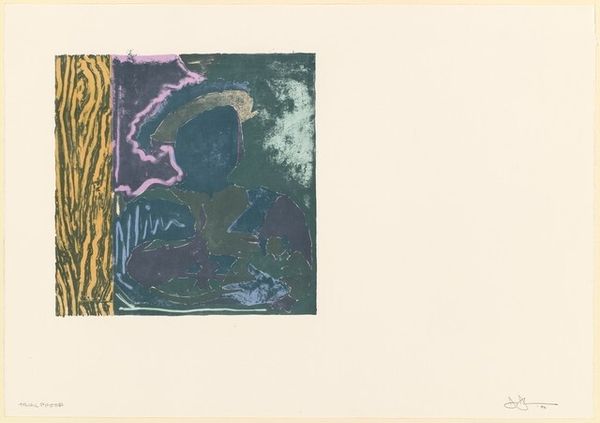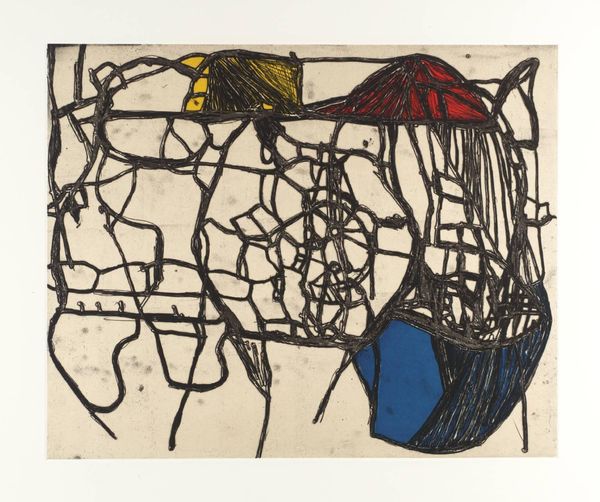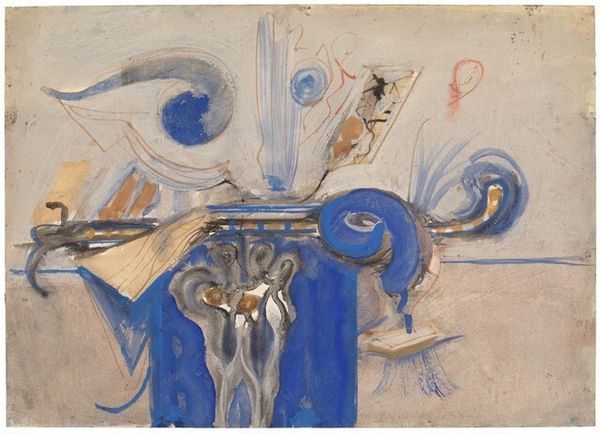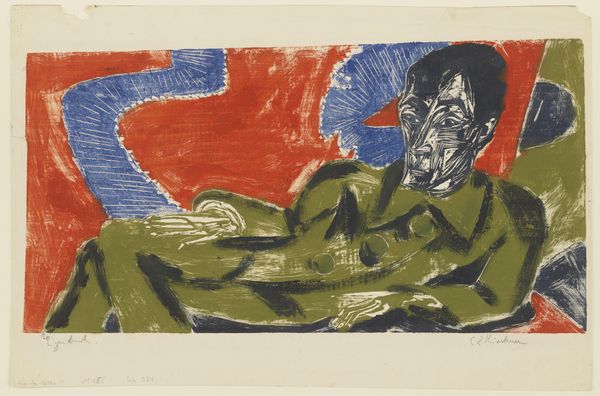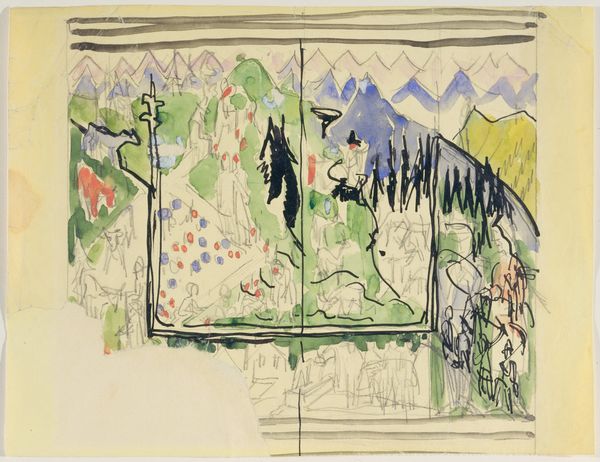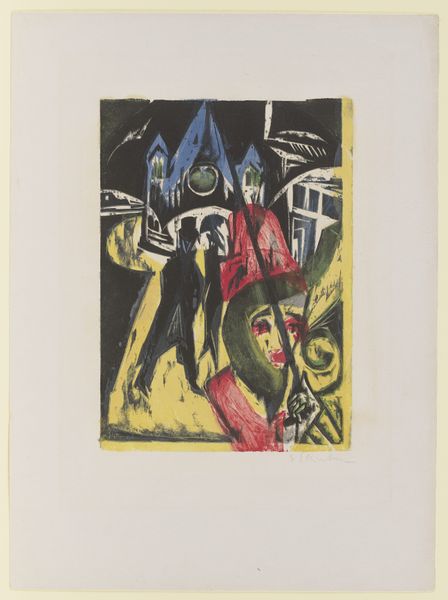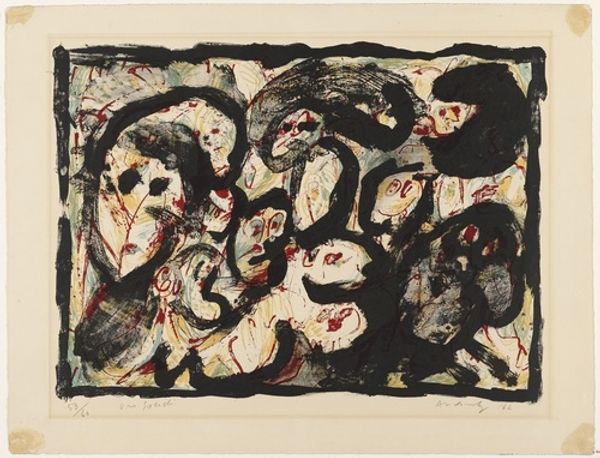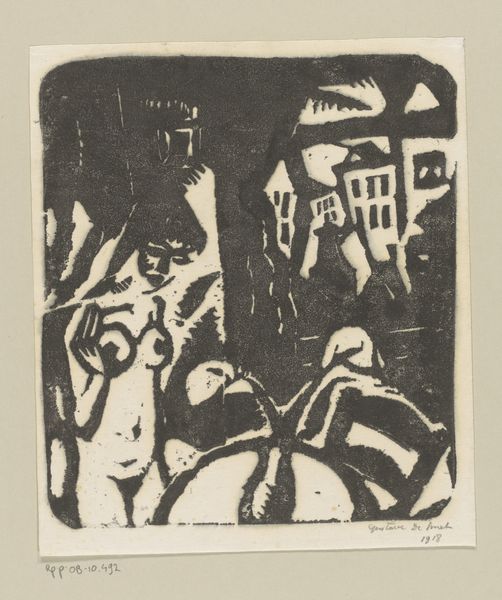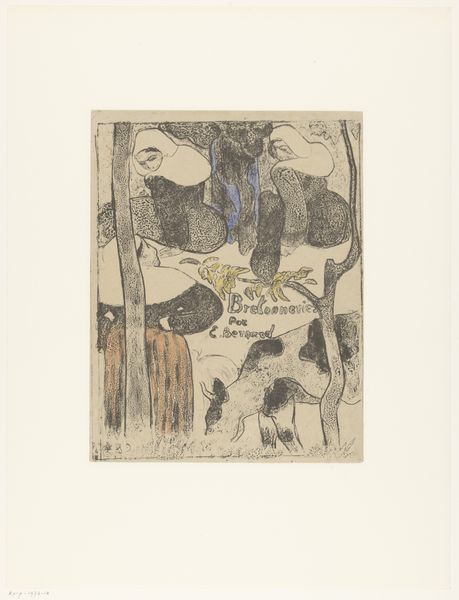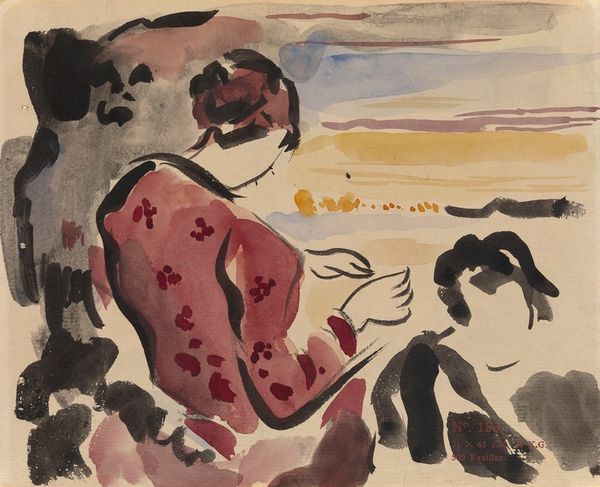
Dimensions: height 115 mm, width 136 mm
Copyright: Rijks Museum: Open Domain
Curator: What an intriguing image; my immediate reaction is one of intimacy. The use of color seems to trap figures and firepot between inside/outside, almost in their own domestic tableau. Editor: I'm drawn to the material process of "Zittende figuren bij een rokende vuurpot," which Reinier Willem Petrus de Vries worked on sometime between 1884 and 1952. It is a drawing using watercolor on paper. Curator: Looking at the grouping of figures in conjunction with the title suggests to me the ways community can be nurtured, in perhaps unlikely scenarios of forced community—especially under global imperialism, given de Vries' birth in Indonesia and subsequent travels to Samoa, which have deeply shaped his work. Editor: The use of watercolor lends a transient quality to the image. Consider also the labor that goes into sourcing these specific pigments and preparing the paper surface. Was there local sourcing? How does the availability and cost shape this community around the pot, this work, even today? Curator: I'm struck by the depiction of figures here as archetypal; they represent both themselves and a kind of displaced or lost "people" that continues to struggle for representation and resources against forces of political corruption and cultural erasure. Are they in the diaspora of home, in longing? What roles does memory play here? Editor: Notice how the support beneath the firepot is rendered? De Vries' emphasis seems placed upon this support's means of manufacturing. Its very support of "community," maybe as literally fueled from beneath. Also, it appears as though de Vries took an almost documentary approach, as evidenced in other figure studies in his repertoire, of what life looked like. Curator: Given what you are saying, I'm wondering whether to see them more clearly as laborers perhaps pausing during a break, huddled in conversation? What possibilities open up when reframing the gaze onto those historically unseen laborers and working class members of society who perhaps keep our economies, at a more domestic or quotidian level, "a-fire." Editor: It reminds me that there's more to discover, not just in the artwork itself, but by extension how such depictions affect its making. Curator: A fitting reflection. It leaves me questioning the legacy of its sociopolitical impact within de Vries' body of work and larger geopolitical context.
Comments
No comments
Be the first to comment and join the conversation on the ultimate creative platform.
